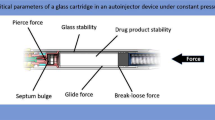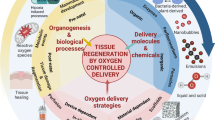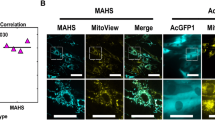Abstract
Objectives
Platelet-rich fibrin (PRF) has been utilized in regenerative medicine as a concentration of autologous platelets and growth factors that stimulates tissue regeneration. More recently, liquid-PRF (also called injectable-PRF; i-PRF) has been brought to market utilizing PET plastic tubes. Due to new advances made in tube technology, the first aim of the present study was to investigate the liquid consistency of liquid-PRF utilizing both standard and chemically modified PET plastic tubes. Furthermore, it is well known that the conversion of PRF into a fibrin matrix is derived from the temperature-controlled enzymatic process that converts liquid fibrinogen and thrombin to solid fibrin. This study also investigated for the first time the use of a cooling device (Bio-Cool) to extend the liquid working properties of liquid-PRF.
Materials and methods
In total, 30 participants enrolled in this study. From each patient, four tubes of liquid-PRF were drawn, two standard white Vacuette tubes and two blue chemically modified hydrophobic tubes. Following centrifugation at 700 RCF-max for 8 min in a Bio-PRF horizontal centrifuge, one white and one blue tube were kept upright at room temperature, while the other white and blue tube were placed within the cooling device. Thereafter, the liquid-PRF layers were monitored over time until clotting occurred. Patient gender, age, and altitude above sea level (+ 5000 ft) were recorded and compared for clotting times.
Results
The findings from the present study demonstrated that the chemically modified PET tubes performed 37% better than the control tubes (extended the working properties of liquid-PRF by over 20 min). Most surprisingly, tubes kept in the cooling device demonstrated an average of 90 min greater working time (270% improvement). While patients living at altitude did significantly improve the clotting ability of liquid-PRF, no differences were observed when comparing male vs female or younger vs older patients in liquid-PRF clotting times.
Conclusions
Cooling of blood following centrifugation represented a 270% improvement in working properties of liquid-PRF. Optimization of liquid-PRF tubes utilizing chemically modified hydrophobic PET tubes also delayed the clotting process by 37%. Patient gender and age had little relevance on liquid-PRF.
Clinical relevance
The present findings demonstrate for the first time that cooling of liquid-PRF is able to extend the working properties of liquid-PRF by over 90 min. Thus for clinicians performing longer clinical procedures, the cooling of blood may represent a viable strategy to improve the working time of liquid-PRF in clinical practice.




Similar content being viewed by others
References
Miron RJ, Zucchelli G, Pikos MA, Salama M, Lee S, Guillemette V, Fujioka-Kobayashi M, Bishara M, Zhang Y, Wang HL, Chandad F, Nacopoulos C, Simonpieri A, Aalam AA, Felice P, Sammartino G, Ghanaati S, Hernandez MA, Choukroun J (2017) Use of platelet-rich fibrin in regenerative dentistry: a systematic review. Clin Oral Invest 21:1913–1927. https://doi.org/10.1007/s00784-017-2133-z
Miron RJ, Moraschini V, Fujioka-Kobayashi M, Zhang Y, Kawase T, Cosgarea R, Jepsen S, Bishara M, Canullo L, Shirakata Y, Gruber R, Ferenc D, Calasans-Maia MD, Wang HL, Sculean A (2021) Use of platelet-rich fibrin for the treatment of periodontal intrabony defects: a systematic review and meta-analysis. Clin Oral Invest 25:2461–2478. https://doi.org/10.1007/s00784-021-03825-8
Miron RJ, Moraschini V, Del Fabbro M, Piattelli A, Fujioka-Kobayashi M, Zhang Y, Saulacic N, Schaller B, Kawase T, Cosgarea R, Jepsen S, Tuttle D, Bishara M, Canullo L, Eliezer M, Stavropoulos A, Shirakata Y, Stähli A, Gruber R, Lucaciu O, Aroca S, Deppe H, Wang HL, Sculean A (2020) Use of platelet-rich fibrin for the treatment of gingival recessions: a systematic review and meta-analysis. Clin Oral Invest 24:2543–2557. https://doi.org/10.1007/s00784-020-03400-7
Miron RJ, Fujioka-Kobayashi M, Moraschini V, Zhang Y, Gruber R, Wang HL (2021) Efficacy of platelet-rich fibrin on bone formation, part 1: alveolar ridge preservation. Int J Oral Implantol (Berl) 14:181–194
Fujioka-Kobayashi M, Miron RJ, Moraschini V, Zhang Y, Gruber R, Wang HL (2021) Efficacy of platelet-rich fibrin on bone formation, part 2: guided bone regeneration, sinus elevation and implant therapy. Int J Oral Implantol (Berl) 14:285–302
Marx RE (2004) Platelet-rich plasma: evidence to support its use. J Oral Maxillofac Surg 62:489–496
Marx RE, Carlson ER, Eichstaedt RM, Schimmele SR, Strauss JE, Georgeff KR (1998) Platelet-rich plasma: growth factor enhancement for bone grafts. Oral Surg Oral Med Oral Pathol Oral Radiol Endod 85:638–646
Cai YZ, Zhang C, Lin XJ (2015) Efficacy of platelet-rich plasma in arthroscopic repair of full-thickness rotator cuff tears: a meta-analysis. J Shoulder Elb Surg 24:1852–1859. https://doi.org/10.1016/j.jse.2015.07.035
Meheux CJ, McCulloch PC, Lintner DM, Varner KE, Harris JD (2016) Efficacy of intra-articular platelet-rich plasma injections in knee osteoarthritis: a systematic review. Arthroscopy 32:495–505. https://doi.org/10.1016/j.arthro.2015.08.005
Singh B, Goldberg LJ (2016) Autologous platelet-rich plasma for the treatment of pattern hair loss. Am J Clin Dermatol. https://doi.org/10.1007/s40257-016-0196-2
Anfossi G, Trovati M, Mularoni E, Massucco P, Calcamuggi G, Emanuelli G (1989) Influence of propranolol on platelet aggregation and thromboxane B2 production from platelet-rich plasma and whole blood. Prostaglandins Leukot Essent Fatty Acids 36:1–7
Fijnheer R, Pietersz RN, de Korte D, Gouwerok CW, Dekker WJ, Reesink HW, Roos D (1990) Platelet activation during preparation of platelet concentrates: a comparison of the platelet-rich plasma and the buffy coat methods. Transfusion 30:634–638
Miron RJ (2021) Understanding platelet rich fibrin. Quintessence. http://www.quintpub.com/display_detail.php3?psku=B0493#.YZruQ1NOnRU
Miron RJ, Fujioka-Kobayashi M, Bishara M, Zhang Y, Hernandez M, Choukroun J (2017) Platelet-rich fibrin and soft tissue wound healing: a systematic review. Tissue Eng Part B Rev 23:83–99. https://doi.org/10.1089/ten.TEB.2016.0233
Pinto NR, Ubilla M, Zamora Y, Del Rio V, Dohan Ehrenfest DM, Quirynen M (2018) Leucocyte- and platelet-rich fibrin (L-PRF) as a regenerative medicine strategy for the treatment of refractory leg ulcers: a prospective cohort study. Platelets 29:468–475. https://doi.org/10.1080/09537104.2017.1327654
Tunalı M, Özdemir H, Küçükodacı Z, Akman S, Yaprak E, Toker H, Fıratlı E (2014) A novel platelet concentrate: titanium-prepared platelet-rich fibrin. BioMed Res Int 2014:209548. https://doi.org/10.1155/2014/209548
Scheraga HA (2004) The thrombin–fibrinogen interaction. Biophys Chem 112:117–130
Wolberg AS, Campbell RA (2008) Thrombin generation, fibrin clot formation and hemostasis. Transfus Apheres Sci 38:15–23
Miron RJ, Fujioka-Kobayashi M, Hernandez M, Kandalam U, Zhang Y, Ghanaati S, Choukroun J (2017) Injectable platelet rich fibrin (i-PRF): opportunities in regenerative dentistry? Clin Oral Invest. https://doi.org/10.1007/s00784-017-2063-9
Nunes CR, Roedersheimer M, Simske S, Luttges M (1995) Effect of microgravity, temperature, and concentration on fibrin and collagen assembly. Microgravity Sci Technol 8:125–130
Brash JL, Horbett TA, Latour RA, Tengvall P (2019) The blood compatibility challenge. Part 2: protein adsorption phenomena governing blood reactivity. Acta Biomater 94:11–24
Picozzi M, De Cristofaro R (1993) Effect of temperature on the association step in thrombin-fibrinogen interaction. Biochem J 294:563–567
Miron RJ, Dham A, Dham U, Zhang Y, Pikos MA, Sculean A (2019) The effect of age, gender, and time between blood draw and start of centrifugation on the size outcomes of platelet-rich fibrin (PRF) membranes. Clin Oral Invest 23:2179–2185. https://doi.org/10.1007/s00784-018-2673-x
Dintenfass L (1975) Elevation of blood viscosity, aggregation of red cells, haematocrit values and fibrinogen levels with cigarette smokers. Med J Aust 1:617–620
Author information
Authors and Affiliations
Corresponding author
Ethics declarations
Ethics approval
No ethical approval was required for this study, as human samples were not identified.
Consent to participate
For this type of study, informed consent was provided prior to blood draw to conduct the outlined experiments.
Conflict of interest
Richard J Miron holds intellectual property on the production of PRF. All other authors declare that they have no conflict of interest.
Additional information
Publisher’s note
Springer Nature remains neutral with regard to jurisdictional claims in published maps and institutional affiliations.
Rights and permissions
About this article
Cite this article
Miron, R.J., Horrocks, N.A., Zhang, Y. et al. Extending the working properties of liquid platelet-rich fibrin using chemically modified PET tubes and the Bio-Cool device. Clin Oral Invest 26, 2873–2878 (2022). https://doi.org/10.1007/s00784-021-04268-x
Received:
Accepted:
Published:
Issue Date:
DOI: https://doi.org/10.1007/s00784-021-04268-x




